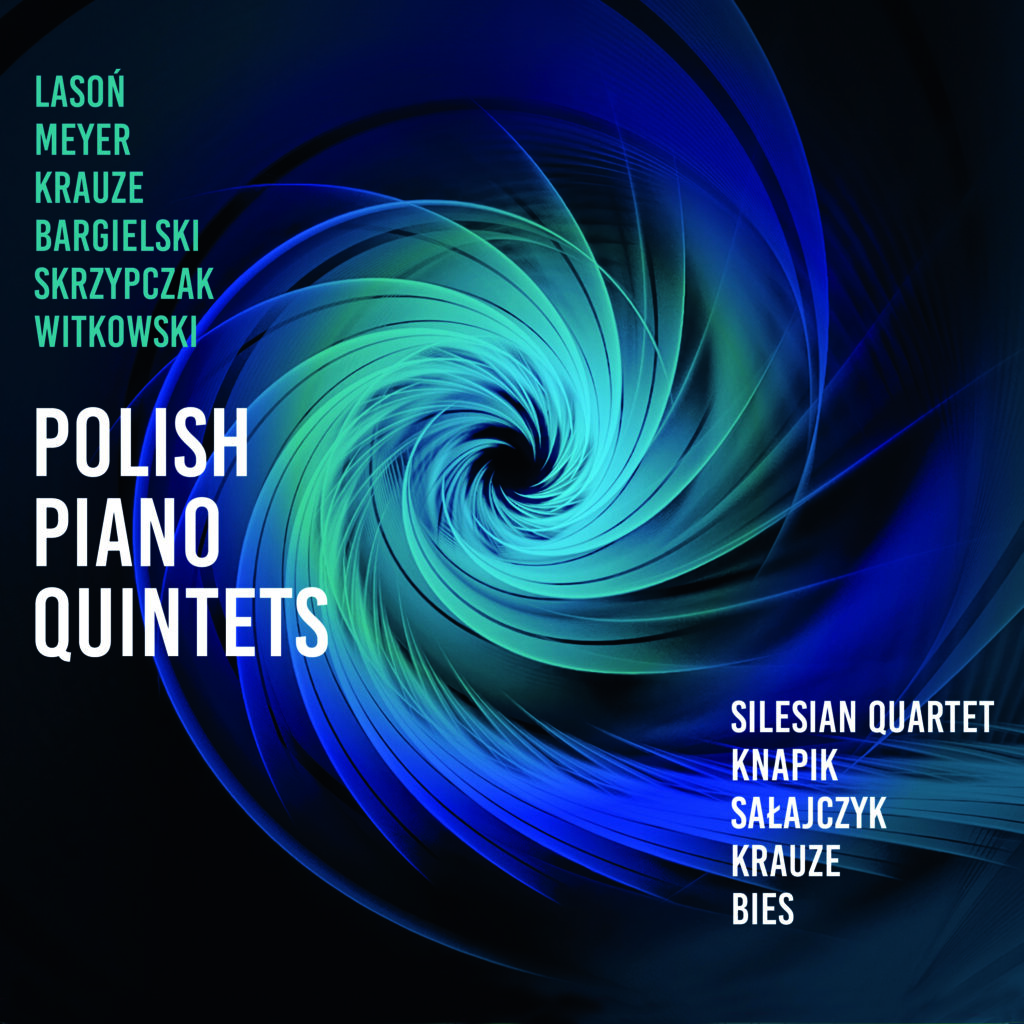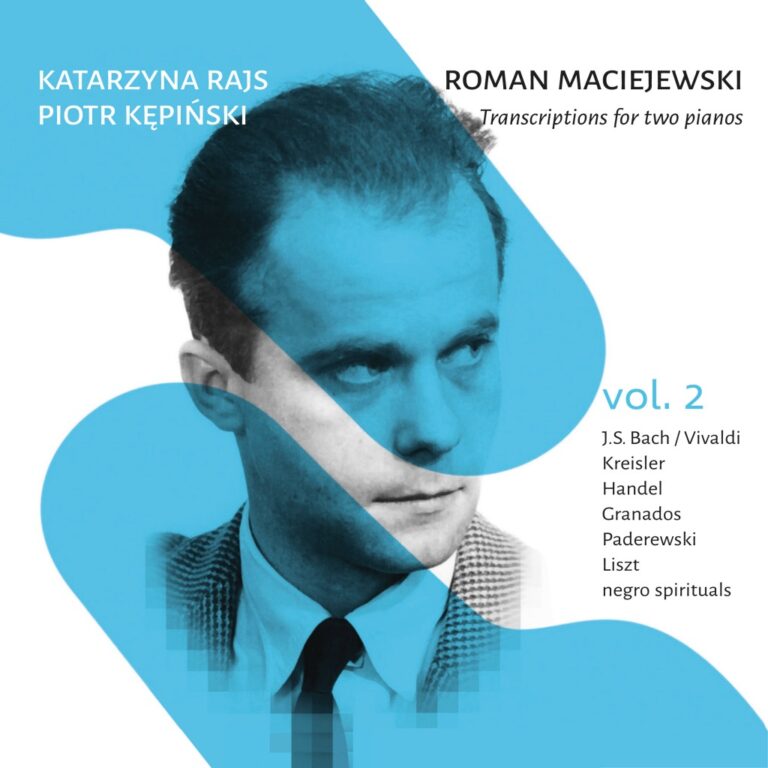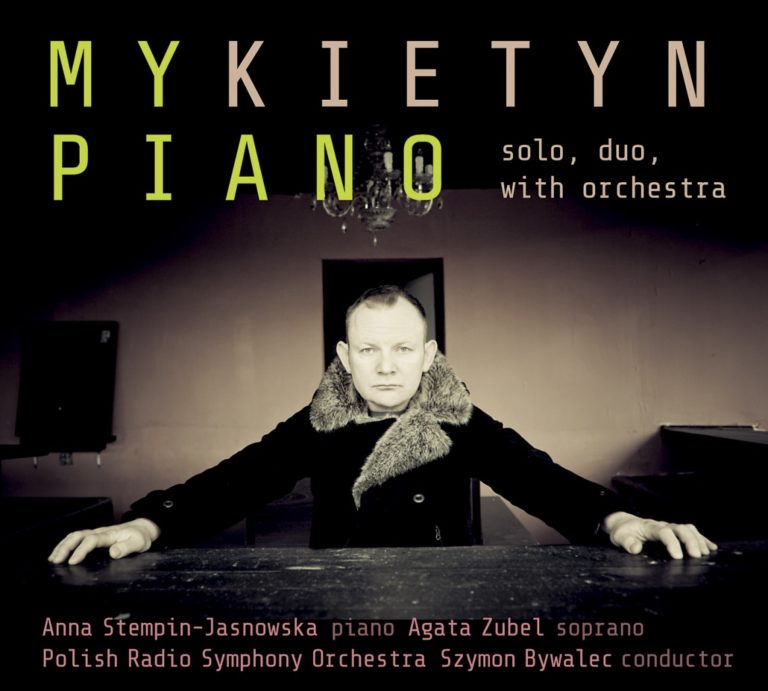
Polish Piano Quintets
PERFORMERS:
Silesian Quartet:
1st violin: Szymon Krzeszowiec [CD I: 3–7; CD II: 1–6],
Marek Moś [CD I: 1–2]
2nd violin: Arkadiusz Kubica
viola: Łukasz Syrnicki [CD I: 3–7; CD II: 1–6],
Witold Serafin [CD I: 1–2]
cello: Piotr Janosik [CD I: 3–7; CD II: 1–6],
Józef Gomolka [CD I: 1–2]
piano:
Eugeniusz Knapik [CD I: 1–2]
Piotr Sałajczyk [CD I: 3–6; CD II: 1, 5]
Zygmunt Krauze [CD I: 7]
Tymoteusz Bies [CD II: 2–4, 6]
RELEASE DATE: 03/2024
CATALOGUE NO. ACD 332
GENRE: chamber music
Six composers – seven quintets – four pianists – one quartet. The latest double-CD album of the Silesian Quartet contains compositions by Aleksander Lasoń, Krzysztof Meyer, Zbigniew Bargielski, Bettina Skrzypczak and Bartosz Witkowski. The quartet is accompanied by pianists: Eugeniusz Knapik, Piotr Sałajczyk, Zygmunt Krazue and Tymoteusz Bies.
Aleksander Lasoń belongs to the Stalowa Wola generation, thus called because they entered the music world by storm, presenting their works during the festival ‘Young Musicians to the Young City’, which was organised in Stalowa Wola in the late 1970s. It was a time when composers, tired of the ‘terror of the avant-garde’, began to seek for expressive qualities in music, exploring its beauty and internal truths. Lasoń implemented these ideals by embracing the traditions of absolute or ‘pure’ music, devoid of any programmatic content. His output is thus composed mainly of symphonic and concerto-type works, as well as chamber music genres. In his compositions, he has created a unique musical world, based on contrasts between vigorous action and contemplation, and replete with folk-related or Oriental motifs.
Krzysztof Meyer is a composer, pianist, chamber musician, lecturer, and author. His creative path reflects the transformations of musical styles in the 20th and 21st centuries, from the avant-garde and sonoristic beginnings, to an individual manner of reviving different types of traditional mu- sical language. Meyer’s rich oeuvre comprises a vast spectrum of musical genres, from operas to songs, symphonies (including symphony-cantatas), concertos, chamber music (string quartets in particular), and solo pieces. Meyer’s language combines constructivism (most prominently, various types of symmetries) with emotional considerations. The latter also impact the overall concept of form, which, as in Witold Lutosławski, is expected to take into account the psychology of music perception by creating narratives (‘musical action’) that leave no listener indifferent.
Zygmunt Krauze is a composer, pianist, and educator, founder of Music Workshop ensemble and IRCAM’s music advisor, composition teacher at several universities in America, Europe, and Asia. His musical microcosm is a combination of French ele- gance, Slav ardency, and Far Eastern self-restraint. One of the keys to Krauze’s style can be found in the art of Władysław Strzemiński. The first fruit of the composer’s fascination with these paintings was his cycle of Five Unistic Pieces (1963) for piano.
Zbigniew Bargielski fuses various trends and styles of 20th-century music in his works, combined with references to what came before. Could we call it polystylism then? The term seems to fit, except that behind this façade of multiplicity there is an underlying narrative principle which unifies (to some extent) the varied surface of the music. Apart from some qualities of the Polish school, Bargielski’s music is also marked by French-type aesthetic distance (a possible result of the composer’s studies with Nadia Boulanger), paradoxically combined with expressive power (which may derive from his long-time periods of residence in Austria, including his studies in Graz). Chamber music occupies an important place in Bargielski’s oeuvre.
Bettina Skrzypczak’s degrees in music theory and composition from the Poznań Academy of Music were followed by further studies in Switzerland, where she now resides as a lecturer at the University of Lucerne. The composer expounds the main tenets of her artistic work as follows: “It is with a certain nostalgia that I look at the past ages, in which thinkers, scientists, and artists viewed and understood the world from a more universal perspective. To me, similarly, composing music is something more than just a fascination with the world of sound.”
Bartosz Witkowski graduated in composition from Eugeniusz Knapik’s class at the Karol Szymanowski Academy of Music in Katowice. He has won accolades in, among others, the Tadeusz Ochlewski Composition Competition (1st prize, 2021), the Tadeusz Baird Young Composers’ Competition (an honourable mention, 2022), and the Karol Szymanowski International Music Competition (an honourable mention, 2022). Witkowski describes his musical style as an eclectic combination of historical musical forms and techniques with the coloristic achievements of various new music schools. Despite exploring an ironic poetics, in its deeper undercurrent his music is purely expressive and ‘Romantic’.
CD I
Aleksander Lasoń (b. 1951)
Chamber Music No. 1 ‘Stalowa Wola’ for piano and string quartet [12’30]
[1] I 6’30
[2] II 6’00
Krzysztof Meyer (b. 1943)
Piano Quintet, Op. 76 (1990–1991) [40’09]
[3] Maestoso – Più mosso – Tempo I 10’44
[4] Misterioso (attacca) 13’50
[5] Inquieto 4’29
[6] Adagio – Presto – Tempo I 11’04
Zygmunt Krauze (b. 1938)
[7] Piano Quintet (1993) 15‘51
total time: 53’31
CD II
Zbigniew Bargielski (b. 1937)
[1] Schizophony for string quartet and piano (2012) 19’32
Aleksander Lasoń
Ananda for piano and string quartet* (2020–2021) [18’14]
[2] Vedana: Tranquillo. Ma poco più espressivo 7’03
[3] Vinnana: Espressivo e mistico 5’26
[4] Nibbana: Deciso con energia 5’44
Bettina Skrzypczak (b. 1963)
[5] Piano Quintet* (2021) 14’13
Bartosz Witkowski (b. 1998)
[6] Piano Quintet Landscape from Harenda* (2023) 14’18
total time: 66’19
* World Premiere Recording



